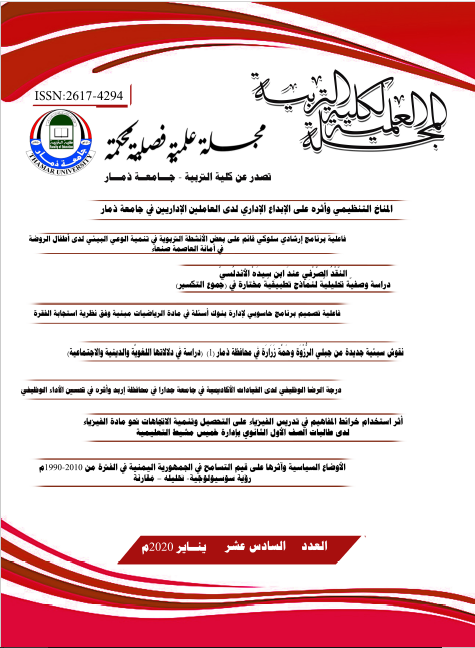The Effectiveness of designing a Computer Program to manage question banks in mathematics based on Item Response Theory
DOI:
https://doi.org/10.60037/edu.v1i16.1169Keywords:
Question bank, Item response theory, Mathematics, Measurement and evaluation, Instructional designAbstract
This study aimed to shed light on the importance of educational design and evaluation in improving the educational learning process, especially in building question banks according to the theory of paragraph response and managing them electronically, which allows continuous evaluation for learners, by providing a large group of questions that have been calibrated with scientific accuracy that reassures their safety and ease of application. The procedures followed by the researchers in designing and producing a computer program with specific specifications that achieve the quality of management of the mathematics question bank for the ninth grade, which the researchers previously prepared, are explained according to the paragraph response theory. The effectiveness of employing the designed program in managing the mentioned question bank has been verified, as 206 questions were stored with their information. When selecting paragraphs from the bank with certain specifications, the program responded to this and provided the paragraphs that meet the required conditions with the information related to each paragraph. It was noted that the selected paragraphs were distributed among the academic units and according to the specifications determined by the bank manager. The program also allowed the designer: to add new paragraphs to the program's database, to amend previously stored paragraphs, and to delete paragraphs from it. The program also responded to the performance of a test via the program itself (electronically), whose paragraphs are chosen in a random manner that varies every time the test is conducted (creating equal tests), and after completing the test the result is shown and a feedback is provided according to the learner’s responses to the test paragraphs.
Downloads
Published
How to Cite
Issue
Section
License
Copyright (c) 2023 Researchers always retain copyright. The research is licensed under an open Creative Commons CC BY 4.0 license, which means that anyone may download and read the research for free. It is also permissible to reuse and quote the research provided that the original published source is cited. These conditions allow maximum use of the researcher's work and presentation.

This work is licensed under a Creative Commons Attribution 4.0 International License.
This journal is open access, which means that all of its contents are available free of charge to the user or his institution. Users are permitted to read, download, copy, distribute, print, search, link to, or use the full texts of articles for any purpose. For any other legal purpose, without requesting prior permission from the publisher or author, provided that the original published source is cited and referred to. This is consistent with the DOAJ definition of open access.; Researchers also always retain copyright. The research is licensed under an open Creative Commons CC BY 4.0 license.
Scientific Journal of the Faculty of Education, Thamar University © 2006 by Faculty of Education is licensed under Attribution 4.0 International







